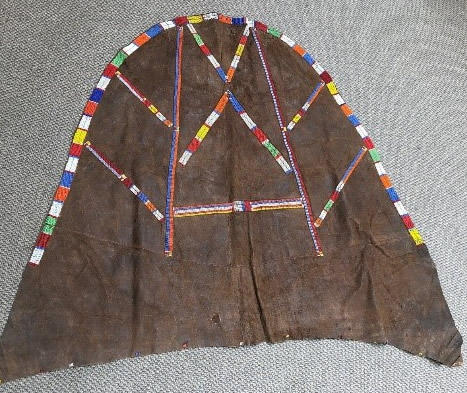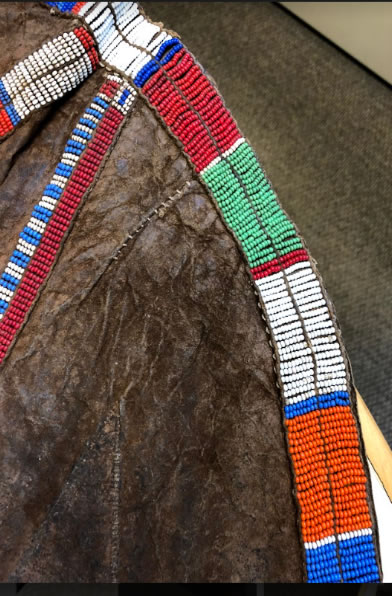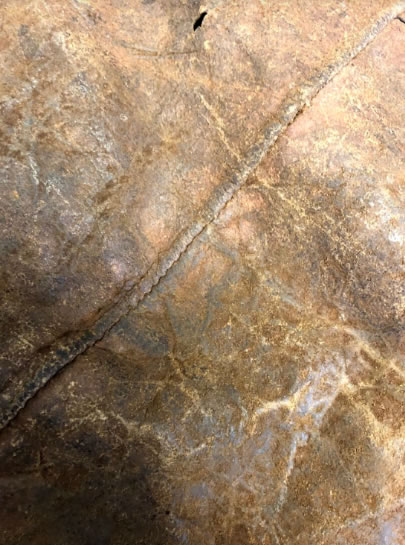An Olekesana, a leather cape, is the centerpiece of the Maasai traditional and celebratory clothing which also provides a glimpse into the history of the Maasai in Africa. An Olekesana, which can also be worn as a skirt, is made out of sheep skin (generally for women) or goat skin (generally for men) and decorated with beads. For women it can signify a woman’s marital status or fertility while also serving as a functional element of clothing that provides warmth. The quality of the leatherwork, beadwork and traditions all allow this garment to remain part of Maasai traditional celebratory dress.
Figure 1: Olekesana.Note: The straight edge is worn over theshoulders putting the beadwork on display. |
 |
Leather-work is a very important aspect of Maasai who are careful about how animal skins are used. Traditionally, an Olekesana is made for or passed down to the bride, worn as a part of her marriage ceremony. They were made for a woman by her husband who would have killed and skinned the animal (chosen from his herd) and then prepared the skin and sewn it together. The mother of the bride, or the bride herself would do the intricate bead and any necessary patchwork.
Figure 2: Beadwork |
Figure 3: Interior |
 |
 |
This Olekesana was likely made in 1970s Kenya by the Maasai peoples. The uncured leather is dyed with ochre, the beads are mainly glass with a few plastic ones, and the stitching is done by hand. This one is in significantly better condition than others from that time which are available in markets or on the Internet.
This garment measures 42.5 inches in length, 50.5 inches along the straight top edge, and 53.5 inches diagonally. The beadwork is intricate. The outer border of beadwork has 18 lines of one color followed by one or two blocks of alternate colors. The lines which only have one line of different color tend to be white. There are slightly different versions of each color. The oranges and reds are varied and there are two different kinds of blue, indicating that different beads were used. They are all the same size.
© Elizabeth Gaines, 2019

